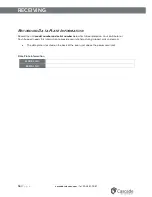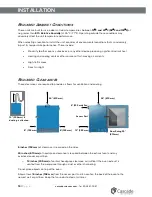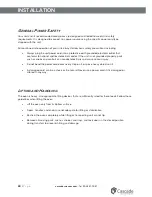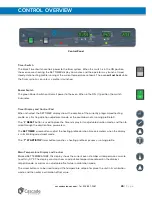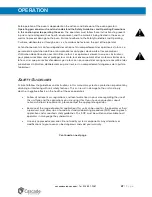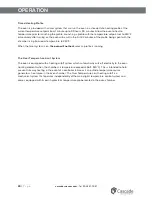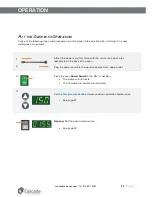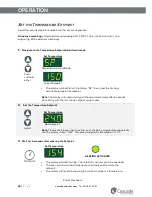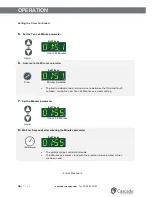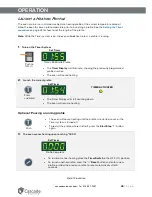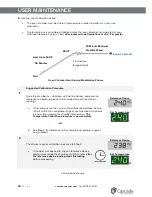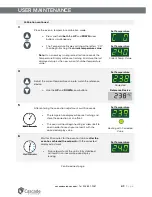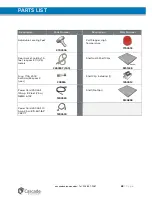
29
|
P a g e
cascadesciences.com
|
Tel. 503 847-9047
OPERATION
T
HEORY OF
O
PERATION
Heating
When powered, the oven chamber heats to and then maintains the currently programmed temperature
setpoint. The setpoint may be adjusted by the operator using the Set Temperature controls.
Heating is controlled by a microprocessor controller board that stores the temperature setpoint. The
microprocessor monitors the chamber air temperature with a solid-state probe located in the airstream on
the right wall of the chamber. When the processor detects that the chamber temperature has dropped
below the temperature setpoint, it pulses power to a heating element in a recirculation air duct space
located above the oven chamber.
The processor employs proportional-integral-derivative analytical feedback-loop functions when measuring
and controlling the chamber air temperature levels. PID-controlled heating pulse intensities and lengths are
proportional to the difference between the measured chamber temperature and the current setpoint. The
frequency of pulses is derived from the rate of change in the difference. The integral function slows the
rate of pulses when the temperature nears the setpoint to avoid overshooting.
These ovens rely on natural heat radiation for cooling.
When the oven is powered the chamber air temperature cannot go below the ambient room temperature
plus
the internal waste heat of the oven. Waste heat is generated primarily by the operation of the blower
fan motor and the resulting air compression in the duct spaces. In practice, the temperature floor is
a36°F
.
The oven depends on the operation of the blower fan to maintain temperature uniformity and stability in
the chamber.
Air Circulation and Exhaust Vent
The oven continually circulates air internally while powered. Air is forced through the small vent
holes on the right side of the chamber, blows across the shelf space to the large holes on the left
side, and is then pulled up into a heating and recirculation air duct by the action of the blower fan.
The oven is provided with a dampener vent that may be opened or closed using a dampener slide
located on the oven top.
The oven must be run with the dampener closed in order to achieve the
stated temperature performance specifications.
The dampener is intended to speed drying or evaporation rates
after
the heated portion of an
application is complete. Opening the dampener vent while the oven is running may speed the rate of
material drying, depending on the nature of your application. However, it also introduces cool air into
the chamber while allowing heated air to exit. This will likely impact the temperature performance of
the oven.
Содержание CDO-5-2
Страница 1: ...Installation Operation Manual CDO 5 2 Drying Decarboxylation Oven 220 240 Voltage...
Страница 6: ...6 P a g e cascadesciences com Tel 503 847 9047 CERTIFICATIONS...
Страница 10: ...10 P a g e cascadesciences com Tel 503 847 9047 SPECIFICATIONS...
Страница 12: ...12 P a g e cascadesciences com Tel 503 847 9047 INTRODUCTION...
Страница 44: ......


